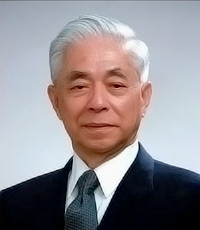Japanese Pioneers
Jun-ichi Nishizawa

Jun-ichi Nishizawa graduated from the Department Of Electrical Engineering in the Faculty of Technology at Tohoku University in 1948 and later completed the course as a doctor of engineering in 1960. He joined the Research Institute of Electrical Communications at Tohoku University as a research assistant in 1953, and in turn became an assistant professor in 1954, a professor in 1962, the director in 1983 (until March 1986), and again the director in 1989 (until March 1990). He became an honorary professor and president of Tohoku University in 1990. He was invited to Iwate Prefectural University as the president in 1998 and to Tokyo Metropolitan University as the president in 2005 while remaining honorary president of Iwate Prefectural University. In 2009, he served as the honorary president of Tokyo Metropolitan University and a special-appointment professor of Sophia University.
He followed the tradition of electronic engineering of Tohoku University passed down from Hidetsugu Yagi to Yasushi Watanabe. In 1949, the year after the announcement of transistors by Bell Laboratories, he embarked on research into transistors in the early years together with Michio Hatoyama and others at the Electrotechnical Laboratory under the direction of Yasushi Watanabe. Placed in charge of research into the collectors of bipolar transistors, he invented the p–i–n-junction diode and the technique of implantating impurity ions. While bearing doubts about the saturation characteristics theory of junction transistors announced by Shockley in 1952, Nishizawa succeeded in showing the correctness of these doubts and producing the static-induction field-effect transistor as a result. All of these technologies came to be widely used in industry. Prof. Nishizawa is well-known in Japan as “Mr. Semiconductor,” since his research into semiconductor lasers, optical fiber, optical diodes, etc. led to numerous achievements in the fields of optical communications and semiconductors. As a consequence, the IEEE decided to name an award for any individual or group that made a significant contribution in the field of electronic devices and its material science after him. This award, the Jun-ichi Nishizawa Medal, is ranked as a permanent medal and is thus the top-level honor in electronics engineering.
He received the Japan Academy Award, the Imperial Invention Prize, the Medal with Purple Ribbon, the Commissioner of Patents Prize, the IEEE Jack A. Morton Award, the Order of Cultural Merits, the Asahi Prize, the Honda Prize, the Laudise Prize of the International Organization of Crystal Growth, the IEEE Edison Medal, the first class Grand Cordon of the Order of the Sacred Treasure, and many others, and has been named a distinguished citizen of Miyagi Prefecture.
Among the many books he’s published, a few major ones include Jun-ichi Nishizawa’s Original Invention Theory, Originality Lies in Struggle, Stubbornly Simple and Honest.


